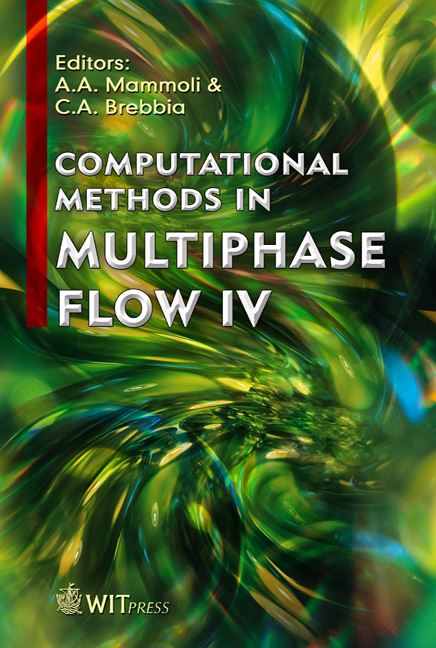CFD Simulation Of A Stratified Flow At The Inlet Of A Compact Plate Heat Exchanger
Price
Free (open access)
Transaction
Volume
56
Pages
11
Published
2007
Size
747 kb
Paper DOI
10.2495/MPF070081
Copyright
WIT Press
Author(s)
M. Ahmad, J. F. Fourmigue, P. Mercier & G. Berthoud
Abstract
The work described in this paper considers 3D CFD (computational fluid dynamics) simulations of an adiabatic stratified liquid-vapor flow at the inlet of a compact plate heat exchanger using the commercial CFD code \“FLUENT” and an in-house code \“NEPTUNE 3D” developed by CEA and EDF. An experimental loop is built up that represents a compact plate heat exchanger in which the liquid and vapor flow rates in the different channels are measured and the flow inside the cylindrical distributor of diameter greater than that of the inlet tube can be visualized. The numerical predictions showed the good agreement with the experimental measurements. The interfacial shear stress was calculated in a steady stratified flow and compared with the computed shear stresses by the two codes. Keywords: two-phase flow, maldistribution, CFD simulation, separated phase model, compact heat exchangers. 1 Introduction Mal-distribution of two phase flow is the main cause of the deterioration of the thermal and hydraulic performances of heat exchangers and it is mainly affected by the flow pattern at the condensers or evaporators inlets (Ahmad et al [1]). The purpose of our study is to find a modeling tool capable of simulating some possible two phase flow patterns in compact heat exchangers. One of the most current flow patterns observed in the inlet tube of a heat exchanger is the stratified flow. Few authors have tested the CFD simulation models to study the distribution in heat exchangers. Jones and Galliera [4] used FLUENT to simulate singlephase flow distribution in the manifold that performed well in calculating the
Keywords
two-phase flow, maldistribution, CFD simulation, separated phase model, compact heat exchangers.





